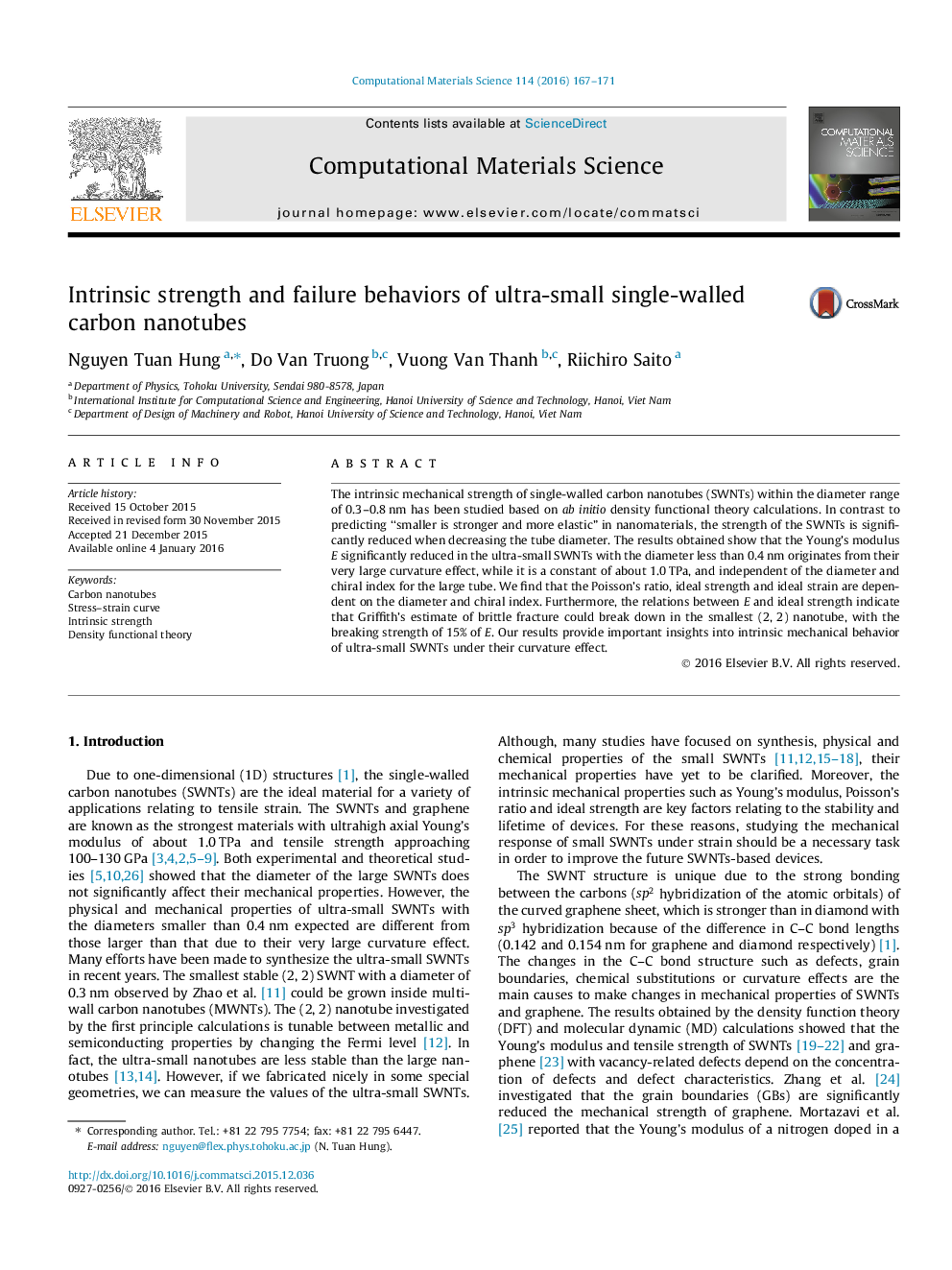| Article ID | Journal | Published Year | Pages | File Type |
|---|---|---|---|---|
| 1559916 | Computational Materials Science | 2016 | 5 Pages |
•Intrinsic mechanical strength of ultra-small SWNTs with diameter less than 0.4 nm is studied.•Young’s modulus significantly reduced in ultra-small SWNTs originates from their very large curvature effect.•Poisson’s ratio, ideal strength and ideal strain are dependent on the diameter and chiral index.•Griffith’s estimate of brittle fracture could break down in smallest (2, 2) nanotube.
The intrinsic mechanical strength of single-walled carbon nanotubes (SWNTs) within the diameter range of 0.3–0.8 nm has been studied based on ab initio density functional theory calculations. In contrast to predicting “smaller is stronger and more elastic” in nanomaterials, the strength of the SWNTs is significantly reduced when decreasing the tube diameter. The results obtained show that the Young’s modulus E significantly reduced in the ultra-small SWNTs with the diameter less than 0.4 nm originates from their very large curvature effect, while it is a constant of about 1.0 TPa, and independent of the diameter and chiral index for the large tube. We find that the Poisson’s ratio, ideal strength and ideal strain are dependent on the diameter and chiral index. Furthermore, the relations between E and ideal strength indicate that Griffith’s estimate of brittle fracture could break down in the smallest (2, 2) nanotube, with the breaking strength of 15% of E. Our results provide important insights into intrinsic mechanical behavior of ultra-small SWNTs under their curvature effect.
Graphical abstractFigure optionsDownload full-size imageDownload as PowerPoint slide
